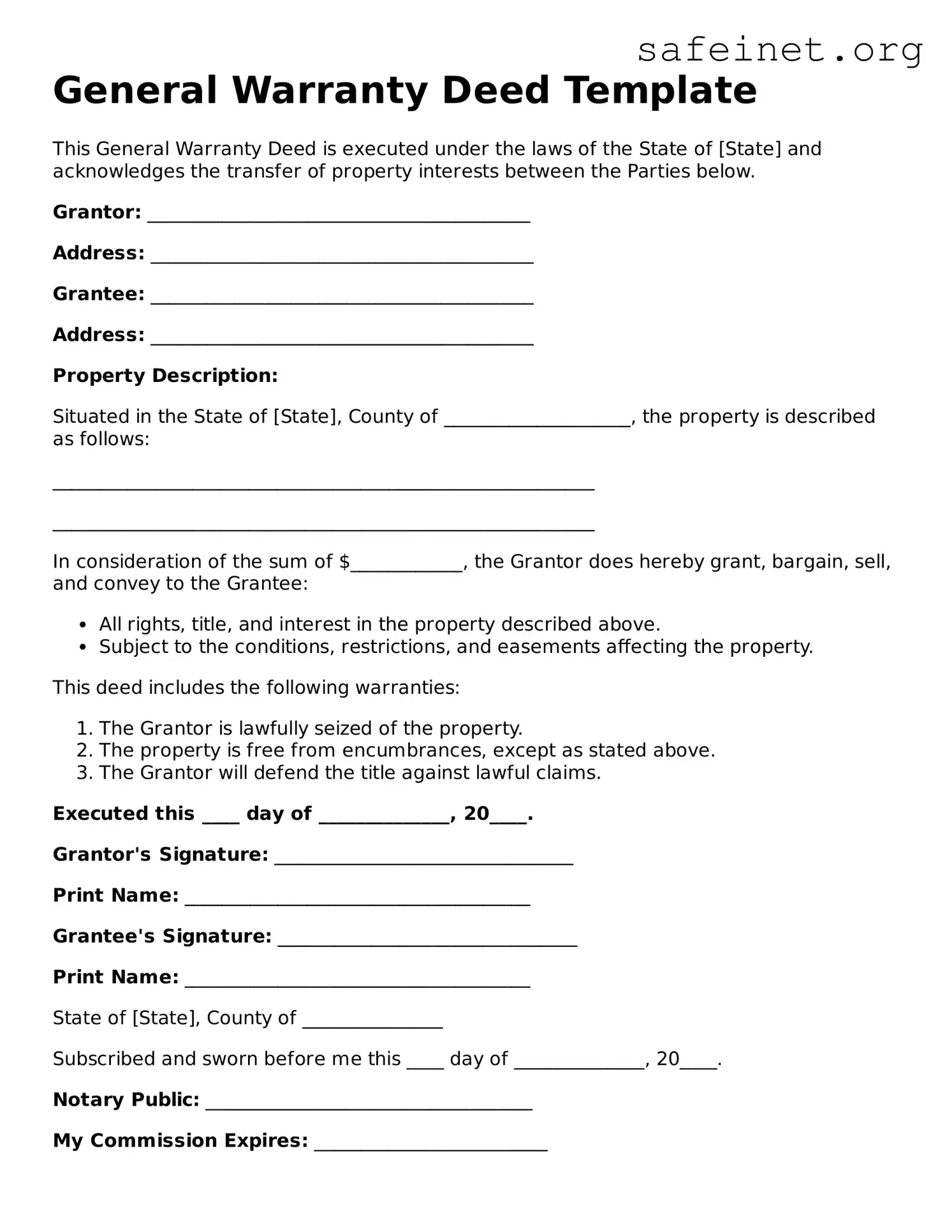General Warranty Deed Template
This General Warranty Deed is executed under the laws of the State of [State] and acknowledges the transfer of property interests between the Parties below.
Grantor: _________________________________________
Address: _________________________________________
Grantee: _________________________________________
Address: _________________________________________
Property Description:
Situated in the State of [State], County of ____________________, the property is described as follows:
__________________________________________________________
__________________________________________________________
In consideration of the sum of $____________, the Grantor does hereby grant, bargain, sell, and convey to the Grantee:
- All rights, title, and interest in the property described above.
- Subject to the conditions, restrictions, and easements affecting the property.
This deed includes the following warranties:
- The Grantor is lawfully seized of the property.
- The property is free from encumbrances, except as stated above.
- The Grantor will defend the title against lawful claims.
Executed this ____ day of ______________, 20____.
Grantor's Signature: ________________________________
Print Name: _____________________________________
Grantee's Signature: ________________________________
Print Name: _____________________________________
State of [State], County of _______________
Subscribed and sworn before me this ____ day of ______________, 20____.
Notary Public: ___________________________________
My Commission Expires: _________________________
